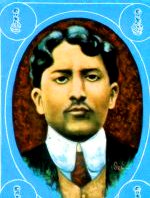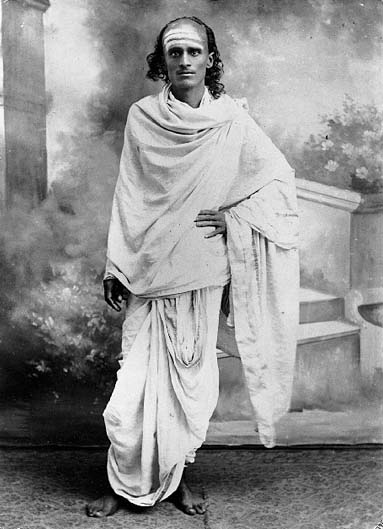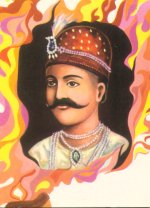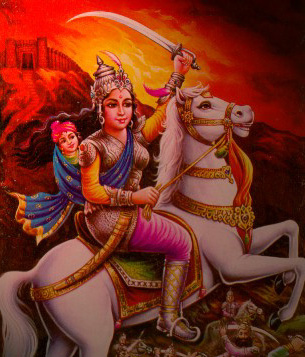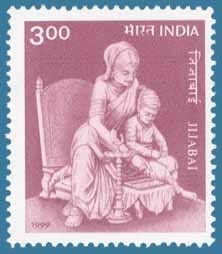
August 1856 when a child was born in a humble cottage in the pretty hamlet of Chempazhanthi near Trivandrum, no one knew it marked the dawn of the most remarkable epoch in the social evolution of Kerala. This child was to blossom forth as the great sage Sree Narayana, the most revolutionary social reformer Kerala has produced. To have proper appreciation of the magnitude of Sree Narayana’s achievements, it is necessary to understand the background of the social conditions in which he was born and brought up. Kerala, reputed for its natural beauty and richness of life, was alas, the accursed land of caste tyranny at that time; to such an extent that it was really a "lunatic asylum" as Swami Vivekananda branded it.
Numerically Ezhavas or Thiyyas are the largest non-caste Hindu community in Kerala. Sree Narayana was born into a middle family of this community. His parents, ‘Madan Asan’ and ‘Kutty Amma’ endearingly called him ‘Nanu’. At the age of five, he began his education in the neighboring school in the old "Gurukula" model. After his elementary education in this school, he became the disciple of a great Sanskrit scholar ‘Raman Pillai Asan’ of Puthuppally in Central Travancore. Under his master’s tutelage, he became well versed in Sanskrit classics. For some time he too functioned as an ‘Asan’, a teacher of infant pupils. Thus he came to be known as ‘Nanu Asan’. Nanu, even from his boyhood had an ascetic bent of mind. When he was on the threshold of his youth, he had to undergo the ceremonial of a marriage due to parental pressure. But he never led a married life. Sree Narayana’s mind was always agitated by a spiritual urge that induced him along with a fellow-spiritualist renowned as ‘Chattampi Swami’, to become the disciple of a man named Ayyavu, the then Superintendent of the British Residency in Trivandrum from whom he learned Yoga.
At the age of twenty-three he left his family, renounced the pleasures of his world and wandered about as an "avadhutha" or mendicant, keeping his body and soul together by the alms he received from all sorts of people. Soon he went into seclusion and immersed himself in meditation, absolutely isolating himself from contact with the human world. The caves of "Maruthwamala" and "Aruvippuram" hills in South Travancore were his abode during this period.
Soon human eyes detected the "Sanyasin" and devotees began to gather around him at Aruvippurm, the seat of his meditation. They participated in his prayers and spiritual learning. In due course the sage emerged from his retreat and like Buddha, came out to shed light onto a world of darkness. Thus began his crusade to re-spiritualise the degraded society and fight against social inequality.
In those days, the foundation and consecration of a Hindu temple was the exclusive monopoly of Brahmins. Sree Narayana’s first revolutionary act was the consecration of temples. The first in this line was the temple dedicated to Shiva in Aruvippuram in 1888 A.D.
The people of the Ezhava community were the first to be awakened by the teachings of Sree Narayana and to be inspired into a spirit of mass militancy to eradicate their social disabilities. This was partly because the great Guru was born in that community and partly because the Ezhavas constituted the largest single community among the downtrodden masses in Kerala. Thanks to Sree Narayana, the Ezhavas came to have their own Hindu temples whereas they were previously denied even entry. Shree Narayana Guru also ensured that his own community, the Ezhavas themselves did not discriminate against others. It should be noted that it was not only "high castes" that discriminated against "low" but various low castes treated each other extremely badly as well. Shree Narayana Guru stopped this totally. Within a few years Sree Narayana established a multitude of temples all over Kerala.
It is significant that the history of founding of Temples by Sree Narayana was a process of evolution through which he slowly prepared the minds of the masses in the progressive realization of more and more revolutionary ideas. First he founded the temples dedicated to Shiva in the caste-Hindu pattern. Then in 1912 he made a temple dedicated to ‘Sharada’, the goddess of learning was founded at Varkala, thereby including the ideal of the worship of knowledge. Revolutionary changes were also introduced in the traditional rituals and ceremonials to be observed in temples. The next milestone in the path of his reform was the foundation of a temple in Murikkumpuzha near Trivandrum in 1922, where, in the place of a deity a bright light revealing the words "Truth, Duty, Kindness, Love" was installed. The climax of his temple reform was the installation of a mirror for worship in the temple founded at Kalavancode in Sherthallai. The mirror is symbolic of Sree Narayana’s teachings that man should find his salvation not in lifeless deities but in himself by the development and utilization of his inner self (atman) which is tremendously powerful and always pure and blissful. We have a portion of the Eternal Being within us, and we should learn to worship it in ourselves and others, and surrender to it. With such thoughts and practice, who can keep us down?
Sree Narayana was a true "rishi" who lived with the people and for the people. He knew that without providing material comforts, it is futile to hold out the illusion of spiritual happiness to the starving and suffering millions. So he conducted a veritable campaign to eradicate the material disabilities of the downtrodden sections of Hindus. In 1903, Dr. P. Palpu, a devotee of Sree Narayana, founded a social organization called S.N.D.P Yogam (Sree Narayana Dharma Paripalana Yogam), the organization to promote the Dharma of Sree Narayana. This organization has done invaluable service in the epic struggle against caste system in Kerala. The organizers of S.N.D.P made Sree Narayana as its first President. The first General Secretary of S.N.D.P Yogam was Kumaran Asan, the peerless pioneer among modern Malayalam poets. He was one of the dedicated disciples of Sree Narayana. In fact the spiritual philosophy and the crusade against caste that illumine Kumaran Asan’s poetry were inspired mainly by association with and inspiration from the great Guru.
Sree Narayana never went about preaching. He was essentially a ‘Karma Yogi’, who served God and practised spirituality through works. But his ‘silence eloquent’, the inner light that emanated from his resplendent personality, inspired and enlightened all around him, wherever he went. Wherever he went, he earned disciples and devotees in large numbers. In 1928 he founded the "Dharma Sangha", an order of Sanyasins who were expected to be his true disciples. The members of this order were to propagate and perpetuate the teachings of Guru.
Early in 1921 an All Kerala Fraternity Conference was held at Alwaye, and in this conference was delivered his eternal message "One Caste, One Religion, One God for Mankind". Sree Narayana founded two famous Ashrams, one at Varkala and the other at Alwaye, with educational institutions attached to them. These Ashrams remain the centers of purity and universal fraternity, the ideals, which the Guru greatly cherished and nourished. Sree Narayana did not attempt to found a new religion, but he propounded a great creed, the creed of "Universal Goodness".
Like the great Shankaracharya (who was also from Kerala), Sree Narayana was a profound thinker, a great seer and a born poet. He was also a great scholar in Sanskrit and Tamil. He has been the author of many works in Malayalam and Sanskrit, particularlu well known of which are "Atmopadesa Sathakam" and "Darsanamala" which epitomize his great moral and spiritual precepts. He has also beautifully translated Tamil works like "Thirukkural" and "Ozhuvilotukkam" into Malayalam. In his works he has superbly expounded the ‘Advaita’ (non-dualistic) philosophy. 'Daiva Dasakam' a simple prayer written by Guru. Sree Narayana greatness was recognized even while they were alive. No better testimony is needed for this than the fact that Rabindranath Tagore (the poet who wrote what is today India’s National Anthem) and Mahatma Gandhi had visited and paid respects to him. Tagore, when he visited Kerala in 1922, interviewed the Guru and was deeply impressed that he remarked-
"Among the ‘Paramahamsas’ alive in India now, there is none who has lived such a life of purity as Swami Sree Narayana".
The great Narayana Guru attained Samadhi on September 20, 1928. Thus physically Guru disappeared, but spiritually he lives forever in the minds of millions.
